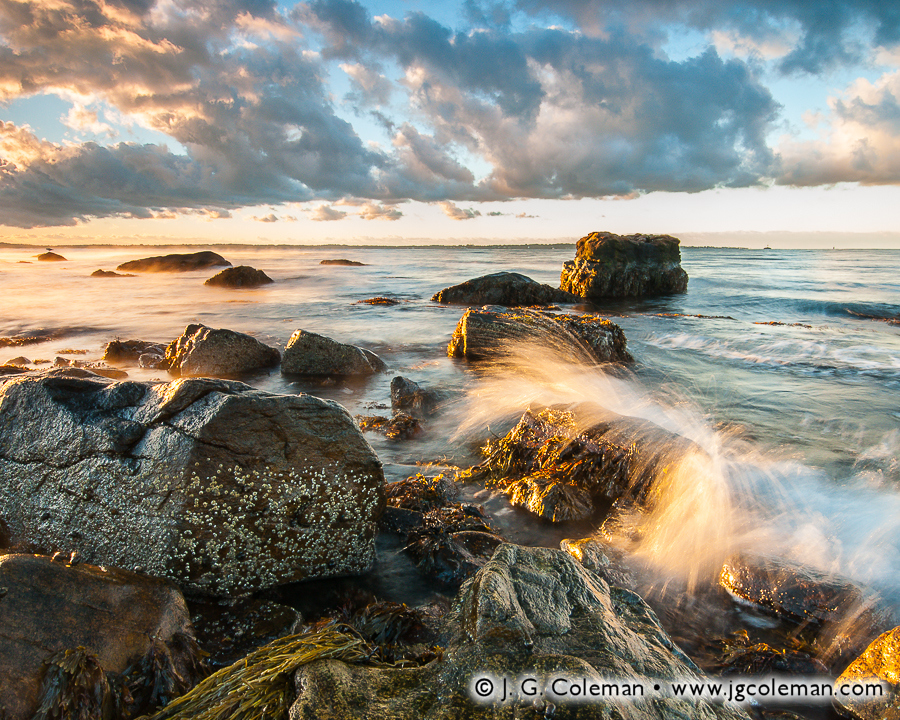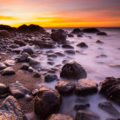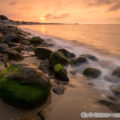
Bluff Point State Park, Groton, Connecticut
© 2014 J. G. Coleman
Even though Connecticut is among the most densely populated states in the entire nation, it can nonetheless boast a landscape that is well over 50% woodlands. “Few places on earth,” stated a 1992 USDA report,” have as many people living among so much forest”. Unfortunately, the wildlands along Connecticut’s coast haven’t fared nearly so well as the rest of the state. Almost all of the nearly 100-mile seashore has succumbed to significant development in one form or another, with most being consumed by suburbs and cottages. It would seem that the invigorating sense of solitude and wildness that one can enjoy in Connecticut’s sprawling inland forests has been thoroughly erased from the coastline. Mercifully, at least one place has been spared. Encompassing more than 800 acres on the coast of Groton, Bluff Point State Park is Connecticut’s last vestige of coastal wildlands and the subject of my newly-released prints.

Bluff Point State Park, Groton, Connecticut
© 2014 J. G. Coleman
Vital Tides I and II (both above) are two of my new works, bringing us to the coastline of Bluff Point in the early hours of morning as waves thrust from Long Island Sound break upon the boulder-laden seashore. I recall that upon first seeing the distinctively rocky beach of Bluff Point a few years ago, I was compelled to describe it as Connecticut’s “Little Acadia”. Most of our experiences of the Connecticut coast tend to be on well-groomed sand beaches, so the especially rugged seashore at Bluff Point offers quite a unique contrast. But maybe the most unique part of the Bluff Point experience is simply in getting there, because once you leave the parking lot in the northern end of the park, you’ve got to hike through more than a mile of forest before this beach comes into view. Such a degree of remoteness is mostly unheard of anywhere else on the Connecticut coast these days and it’s nice to know that at least a sliver of that long-lost solitude by the shore is still available to future generations.

Bluff Point State Park, Groton, Connecticut
© 2014 J. G. Coleman
As we peer down the shoreline in Sunrise on the Groton Coast (above) or take in the breadth of the scenery in Groton Seaside (below), we begin to get a feel for the uncommon beauty that distinguishes Bluff Point from so many other heavily-trafficked beach parks across Connecticut. As with most places in Connecticut, though, things weren’t always so wild and remote at Bluff Point. Even as early as the 1890s, a resort had been constructed near the sandy tombolo that projects westwards from Bluff Point. In the decades that followed, Bluff Point became quite a beloved destination for those seeking some relaxation by the beach. Droves of visitors showed up each year to enjoy sunshine, camping, cottages and a seaside experience more like what you’d find at Connecticut’s more developed beaches in modern times. For those who vacationed at Bluff Point in the 1920s and 30s, the notion that their summertime beach hang-out would somehow revert to 800 acres of wildlands in less than a century would’ve sounded preposterous.

Bluff Point State Park, Groton, Connecticut
© 2014 J. G. Coleman
Of course, what they never could’ve seen coming was the dreadful Hurricane of 1938, which effectively leveled almost every structure on the property. This single, cataclysmic disaster conspired to return Bluff Point to the jurisdiction of Nature; she has worked upon it ever since with spectacular results.
Want to See More?
- To see more of my work from Bluff Point or buy a fine art print of the pieces introduced here, be sure to visit my landing page for Bluff Point State Park.
As part of J. G. Coleman’s Decor Series prints, all of the works seen here are available from Fine Art America. You are encouraged to visit J. G. Coleman’s Decor Prints eStore, or see all of Fine Art America’s Long Island Sound art or beach art.





